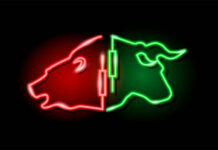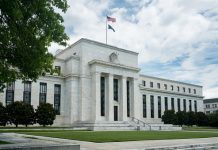Markets
ECB president Lagarde’s “I stand by the comments made in Davos” did little to impress markets. They even interpreted it the other way around as if the ECB chair went slightly off-script at the World Economic Forum (“summer seems to be right time to start cutting policy rates”). Comments about downside economic risks, a downward trend in underlying inflation and declining wage growth only added to the feeling that the central bank wants to keep all options open. That is obviously after the April policy meeting as they rather forcibly committed to wanting to see the outcome of Q1 wage negotiations first. Money markets added to policy easing bets, fully discounting an April rate cut (not our preferred scenario) and discounting a cumulative 50 bps rate cuts by June and almost 150 bps by the end of the year. That’s more or less equal to a 25 bps rate cut at each and every meeting starting in April. German Bunds outperformed US Treasuries. Daily changes on the German yield curve ranged between -9.3 bps (2-yr) and -2.4 bps (30-yr). US yields followed the move south with daily changes varying between -3.8 bps (30-yr) and -8.8 bps (3-yr) despite another strong quarterly GDP figure. Q4 growth beat consensus at an annualized 3.3% (vs 2% forecast) with another strong contribution of personal consumption (2.8%). We believe that US Treasuries followed Bunds higher because yesterday’s display by ECB Lagarde will likely see a repeat in Powell’s testimony next week given that the Fed Chair wasn’t even fighting market expectations back in December. US money markets attach a 50% probability to a March rate cut. In FX space, the single currency lost out after Lagarde’s unconvincing performance. EUR/USD closed at 1.0846 after testing the YTD low at 1.0822. Our bias remains for a weaker EUR/USD with 1.0724/12 the important reference (Dec 2023 low and 62% retracement on Q4 rally). EUR/GBP closed before the December low of 0.8549, with the downside of long-standing sideways range at EUR/GBP 0.8493 coming ever closer in the run-up to next week’s Bank of England policy meeting. Stock markets added another victory lap with key European and US benchmarks closing up to 0.5% higher. Today’s eco calendar is empty apart from December US PCE deflators. Those shouldn’t come as a surprise though as they can be derived from yesterday’s GDP data. The countdown to next week’s Fed gathering starts and we don’t expect an immediate reversal of the post-ECB market moves.
News & Views
In an interview with radio broadcaster Inforadio, Hungarian Finance Minister Mihaly Varga said that Hungary won’t be able to reduce the budget deficit to 3% this year. This will probably only be possible by 2025. Varga specified the government needs to balance the budget without hindering economic growth. In this respect, reducing the budget deficit from 6% to 3% in one year would make growth that just has started to recover very difficult. Trying to reach the target would require a HUF 2700bn (€7bn) adjustment. Varga clarified that this assessment is his personal opinion, not an official viewpoint of the government.
Tokyo price inflation, which is seen as a precursor for the national data, eased substantially this month. CPI ex fresh food dropped back below the BoJ’s 2% target, declining from 2.1% in December to 1.6% January (vs 1.9% forecast). This was the lowest reading since March 2022. The decline was mainly driven by energy prices. Still, the core measure ex-fresh food and energy also slow to 3.1% from 3.5%. However, the picture on Japanese price trends is not unequivocal. National services PPI grew by 2.4% Y/Y in December, holding at the highest level since 2015. In the meantime, the Minutes of the BoJ December policy meeting revealed that policymakers considered it important for the MPC to deepen discussions on the timing of the exit from current monetary policy and on the appropriate pace of raising policy interest rates thereafter. However, there are still quite different views within the MPC on the path for monetary policy going forward. Some members indicated that the BoJ can maintain substantial monetary easing even after ending the negative policy rate and yield curve control. After jumping higher earlier this week, the 10y Japanese bond yield today eases slightly (0.72%). The yen is unchanged at USD/JPY 147.8.













